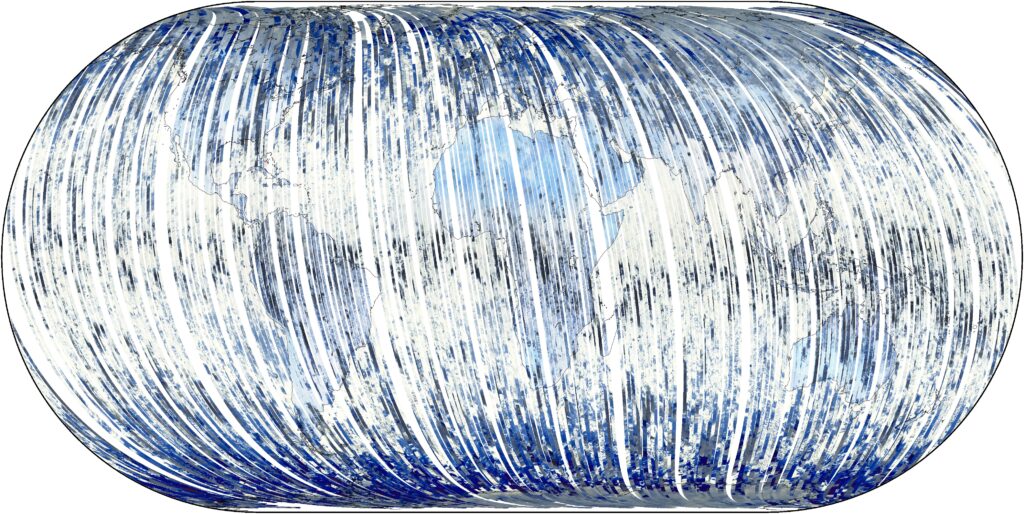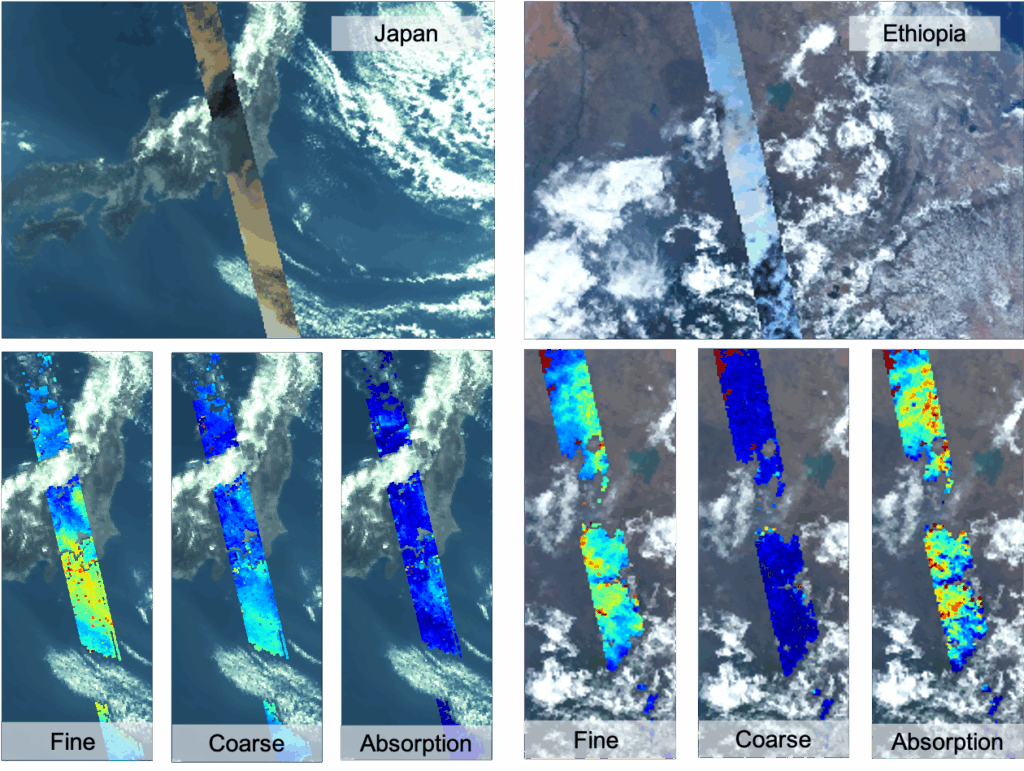NASA’s klimaatsatelliet PACE, met aan boord het Nederlandse instrument SPEXone, heeft de mijlpaal van First Light bereikt. Daarmee heeft de wereld nu toegang tot satellietbeelden die type en grootte van fijnstofdeeltjes onderscheiden. SPEXone meet ook de mate waarin aerosolen zonlicht absorberen en reflecteren. Hiermee kunnen wetenschappers de onzekerheden in klimaatmodellen verkleinen. SPEXone is gebouwd door SRON en Airbus Netherlands B.V., met ondersteuning van TNO.

First Light
Sinds de lancering op 8 februari 2024 vanaf NASA’s Kennedy Space Center in Florida is PACE zorgvuldig aangezet om te checken of alle instrumenten de heftige schokken en blootstelling aan de ruimte goed hebben doorstaan. Dat resulteert nu in de eerste wetenschappelijke afbeeldingen—First Light. ‘Uiteindelijk gaan heel veel van dit soort metingen optellen tot een compleet beeld van aerosolen in de atmosfeer,’ zegt Otto Hasekamp (SRON), hoofdonderzoeker van SPEXone. ‘We brengen in kaart hoeveel van welke soort fijnstof er is, en gaan die informatie combineren met klimaatmodellen om te onderzoeken wat hun bijdrage is aan de wereldwijde temperatuur. Dan weten we beter in welke mate fijnstof de opwarming door broeikasgassen maskeert.’
polaroid zonnebril
‘SPEXone werkt precies zoals we bedacht en ontworpen hebben en gedraagt zich net als bij de laatste testen op de grond,’ zegt Marc Oort, systems architect bij Airbus. ‘Het zorgvuldige ontwerp en nauwgezette samenbouw hebben hun nut bewezen. SPEXone is klaar voor zijn belangrijke taak.’
Figuur 1 toont de wereld bezien vanachter een polaroid zonnebril, gecompileerd door de honderden banen van SPEXone om de aarde. Daarbij trekt het instrument als een bezem een 100-km brede strook over de aarde in de zuid-noordrichting. Verschillende achtergronden zoals zee en land polariseren zonlicht op hun eigen manier, waardoor ze er anders uitzien. Land is bijvoorbeeld vaak blauw, omdat alleen het verstrooide licht in de lucht erboven is gepolariseerd.

Figuur 3 toont de eigenschappen van aerosolen boven Japan (links) en Ethiopië (rechts). Beide bestaan voornamelijk uit fijne deeltjes. Beide linkerpanelen tonen immers veel rode en gele plekken, terwijl de middenpanelen grotendeels blauw zijn. In het rechterpanel zien we dat het fijnstof boven Ethiopië veel zonlicht absorbeert; het heeft de signatuur van rook door de verbranding van biomassa. Boven Japan zien we veel fijnstof rond Tokio, richting het zuiden geblazen door de wind. Daar toont het rechterpanel de signatuur van een mix van aerosol uit industrie en transport en natuurlijk fijnstof zoals zeezout.
Jeroen Rietjens (SRON) zat achter de knoppen in de control room op NASA’s Goddard Space Flight Center toen de eerste data binnenkwamen. ‘Toen we het commando gaven om SPEXone aan te zetten, was het een enorme opluchting om ons instrument in goede gezondheid te zien. We waren helemaal blij toen we twee weken later de eerste camerabeelden namen en het lukte om er fijnstofkaarten van te maken. Dat betekende dat alle schakeltjes samenvielen waar we met zijn allen jaren aan hadden gewerkt.’
SPEXone is ontwikkeld door een Nederlands consortium bestaande uit SRON en Airbus Netherlands B.V., daarbij ondersteund door TNO. SRON en Airbus zijn verantwoordelijk voor het ontwerp, de assemblage en het testen van het instrument. De wetenschappelijke leiding ligt in handen van SRON. SPEXone is een publiek-privaat initiatief dat mogelijk gemaakt is door het NSO met door OCW beschikbaar gestelde middelen en door SRON/NWO-I en ondersteund door private investeringen van Airbus Netherlands B.V.


